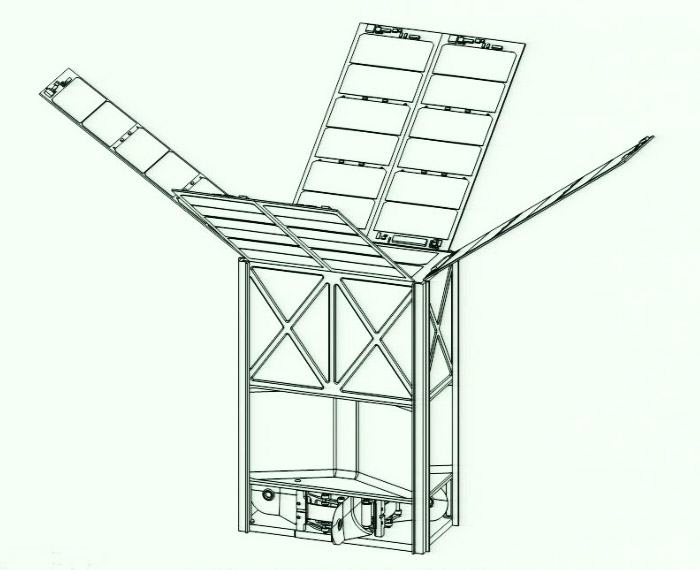As the emerging commercial space industry enables more people to travel into space, and we become more dependent on satellite systems for military and commercial purposes, accurate and timely space weather forecasts are a matter of growing importance.
During the Solar Maximum period of 1989, solar storms damaged dozens of satellites and disrupted satellite operations and communications on numerous occasions. NORAD lost track of 1300 objects in orbit. The US military experienced worldwide communication disruptions that affected combat operations during Desert Storm. At one point, solar activity even caused loss of contact with Air Force One. Millions of people in the US lost power due to electrical blackouts.
Airlines routinely reroute commercial flights during periods of intense solar activity. Orbital and suborbital spaceflight operators will need to make similar adjustments to their operations.
Unfortunately, solar activity is not entirely predictable. Solar storms are not confined to Solar Maximum periods. They can occur at any point in the solar cycle. For that reason, constant monitoring is required.
Currently, the best warnings of incoming space weather come from NASA’s Solar and Heliospheric Observatory (SOHO) and Advanced Composition Explorer (ACE) satellites. SOHO and ACE are positioned at the L1 libration point between the Earth and the Sun. The Earth-Sun L-1 point is located about 0.01 AU from Earth. (The distance from the Earth to the Sun is 1 Astronomical Unit, or AU.) At the L-1 point, the gravitational fields of the Earth and Sun are in balance, allowing NASA to park the SOHO and ACE satellites at that location. At a distance of .01 AU (about one million miles) from Earth, instruments can measure incoming solar particles about hours before they arrive at Earth or near-Earth orbit. Warning times vary, depending on the speed of the solar wind. Three hours of warning time is a typical figure.
Given the costly and potentially life-threatening nature of space weather, more warning time would be desirable.
Increasing the warning time requires moving the space weather satellite closer to the Sun and farther from Earth. Unfortunately, there is no stable point closer to the Sun where a satellite can be parked and remain in position relative the Earth without constant thrust. It’s not feasible to provide a satellite with enough propellant to provide such thrust for years on end. It is possible for a satellite to create thrust without propellant, however, by using a solar sail.
A satellite equipped with a solar sail could use the pressure of the Sun’s light to hover at a point sunward of L1, about .02 AU (2 million miles) from Earth. This would double the typical warning time from three hours to six, giving more time to take protective measures.
Such a satellite was first proposed in 1999 as a candidate concept for the Space Technology 5 (ST-5) mission in NASA’s New Millennium program. The ST-5 GeoStorm Warning Mission called for a 213-kilogram satellite, launched on a Delta II-class rocket, with a 4.5-kilogram payload of science instruments. Ultimately, the GeoStorm concept was not selected. Instead, ST-5 became a constellation of three satellites to study the Earth’s magnetic field. Ground demonstrator hardware for the GeoStorm solar sail was built and tested, however.
In the following decade, the concept of a sunward space-weather warning mission was refined and reproposed as Heliostorm. Incorporating new technology, Heliostorm would be a slightly small satellite. With a mass of 148 kg, it could be launched on a Taurus-class rocket rather than a Delta II. Thanks to advanced technology, it could carry a much larger instrument payload – 50 kilograms instead of 4.5. Heliostorm was recommended for funding in NASA’s 2005-2035 heliophysics roadmap. So far, however, there has been no funding.
The most recent concept has appeared in a presentation given by JPL’s Robert Staehle at the NASA Institute of Advanced Concepts and the CubeSat Workshop at California Polytechnic State University. The mission concept is credited to Andrew Klesh of JPL and Bruce Betts, resident scientist and director of projects at the Planetary Society.
The CubeSat concept would be a much smaller (and undoubtedly cheaper) satellite. The current thinking calls for a 6U CubeSat (each CubeSat “unit” is 10 cm x 10 cm x 10 cm). Based on the CubeSat specification, that would give the satellite a total mass of just 10 kilograms. One CubeSat unit would be devoted to a deployable magnetometer and plasma instrument. to units would carry the solar sail, two units would be devoted to avionics and telecommunications (probably optical), and one unit would be devoted to attitude control.
The satellite would be launched toward geosynchronous orbit (presumably on a low-cost rideshare mission), then use a lunar flyby for escape to L1 before using its solar sail to achieve and hold its final position.
Staehle believes the scientific communication could delivered the miniaturized space-weather instrument in about two years.
The low cost of this approach seems desirable for a number of reasons. Not only is the CubeSat concept more likely to be funded in this era of tight budgets, it might be cheap enough to allow for the construction and launch of multiple copies. Since space-weather forecasting is safety- and life-critical, having redundant systems in orbit seems like a very good idea. The fact that current systems are not redundant should be a cause for concern.




Leave a Reply